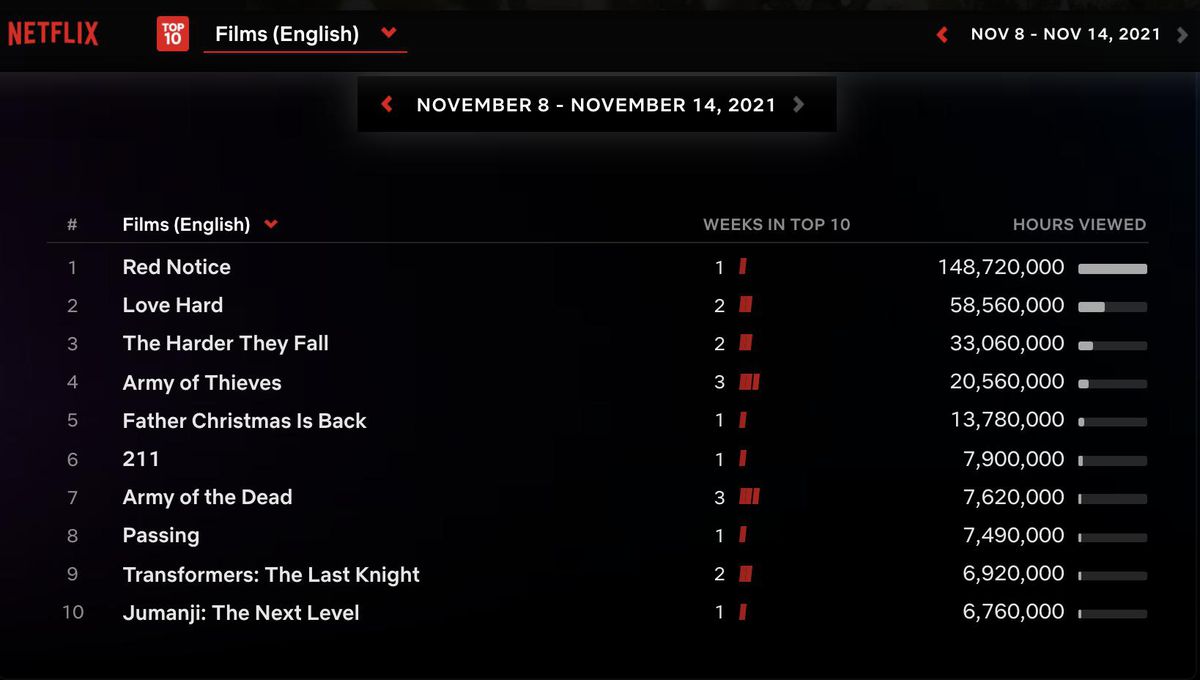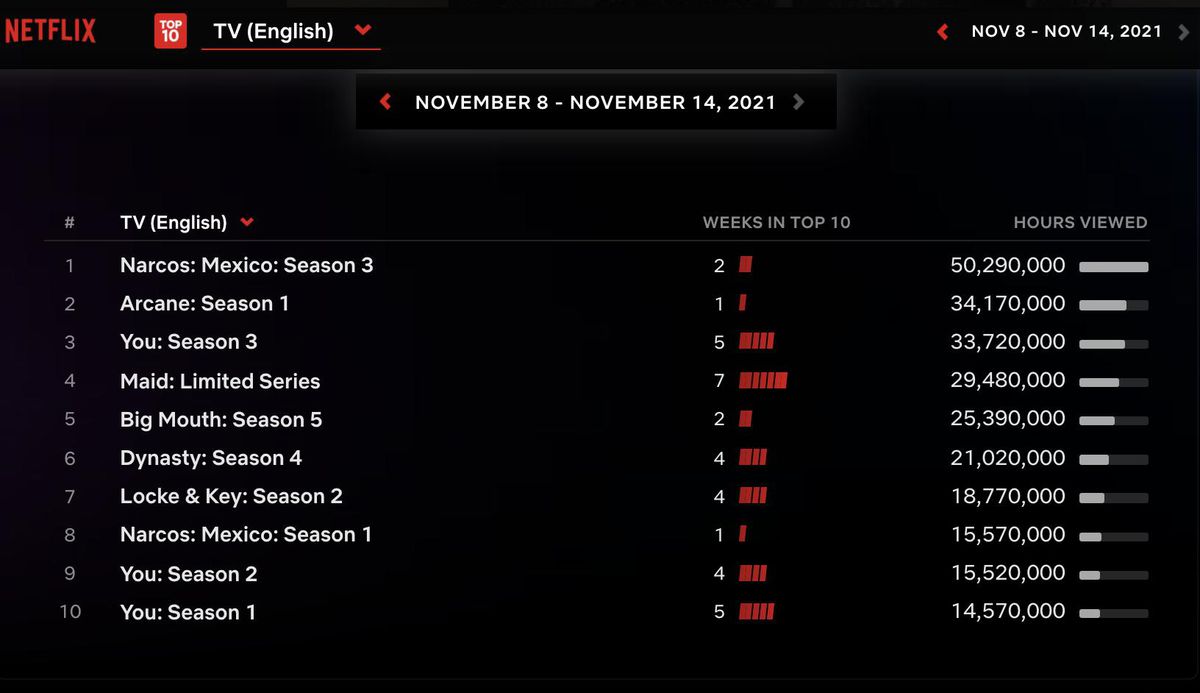When Netflix ushered in the streaming video era, it helped kill off traditional TV ratings. Now, the company says it wants to bring them back, sort of: The streaming giant is going to start publishing lists of its most popular TV shows and movies, which it will update weekly.
Netflix’s data will show up on its own website, where it will offer multiple top 10 lists that rank titles by the number of hours the company’s subscribers have spent watching them. The company will have global rankings for TV shows and movies, as well as top 10 lists for 90 different countries. Netflix also says it will bring in accounting firm Ernst & Young to audit its numbers, and will publish a report from that company next year.
This will have almost zero impact on the way you watch Netflix — unless you are into tracking data about the way other people watch Netflix. Which, to be fair, some people are.
Here’s a sample of what Netflix’s ratings will look like — these charts rank Netflix’s global viewing for the second week of November, and include stuff Netflix owns as well as stuff it licenses from other companies:


One streaming company publishing its own viewing data on a regular basis isn’t the same as the old TV world, when Nielsen regularly tracked viewing consumption for all TV networks and made that data widely available.
But we’re not living in that world anymore. Instead, video viewing is increasingly fragmented into different streaming services owned by different companies, which cherry-pick audience data to share when they think they have something to boast about.
Netflix isn’t any different from its competitors in that respect: It’s putting these new numbers out because they think they reflect well on Netflix.
And while those numbers may be interesting for you, A Person Who Watches Netflix, the numbers are really aimed at a professional audience. That includes investors, who want to see if the billions of dollars Netflix spends on content are being turned into Things People Watch (note that the two Top 10 lists above are dominated by stuff Netflix made instead of rented). It also means Hollywood talent, who want to be reassured that things they make for Netflix are being watched by lots of people.
The numbers also represent an unspoken challenge to rival streaming services like Disney+, Hulu, and Peacock: We dare you to publish your numbers using the same methodology because we bet they’re much smaller than ours. It’s also worth noting that the main audience for traditional TV ratings numbers — advertisers who wanted to know where to spend their money — isn’t material here, since Netflix doesn’t run ads.
Netflix used to keep all of its viewing data to itself, and initially bristled when outsiders tried to measure shows on their own. But two years ago, it started to selectively and periodically release some of its own numbers — always ones that flattered the company.
The numbers also drew derision from competitors and critics. That’s in part because there was no real transparency to the reporting, and in part because of Netflix’s odd and changing definition of what a “view” is. At first Netflix said a view happened if someone watched 70 percent of a TV show; then the company revised that and said anyone who watched at least two minutes of a show counted as a viewer.
Now, Netflix is simply tracking how much time its viewers spend, in aggregate, with a show or movie. That means, in theory, that two people watching Red Notice, its lousy but popular action movie starring Dwayne “The Rock” Johnson, Ryan Reynolds, and Gal Gadot, would count the same as a single person watching the movie twice.
So let’s say Netflix makes a Red Notice sequel. (Pro: The movie, which reportedly had a $200 million budget, is supposed to be Netflix’s attempt to make its own action franchise; Con: It looks and feels like it was made for a lot less than $200 million.) But with the new numbers Netflix is releasing, you won’t have to rely on context-free boasts like this one to gauge whether that’s a good idea:
On the other hand, consumer fetishization of behind-the-scenes info about the entertainment they consume doesn’t necessarily make for a better experience. We used to watch TV shows and movies with almost no idea how many other people were watching, and that was just fine. Feel free to ignore all of this.



